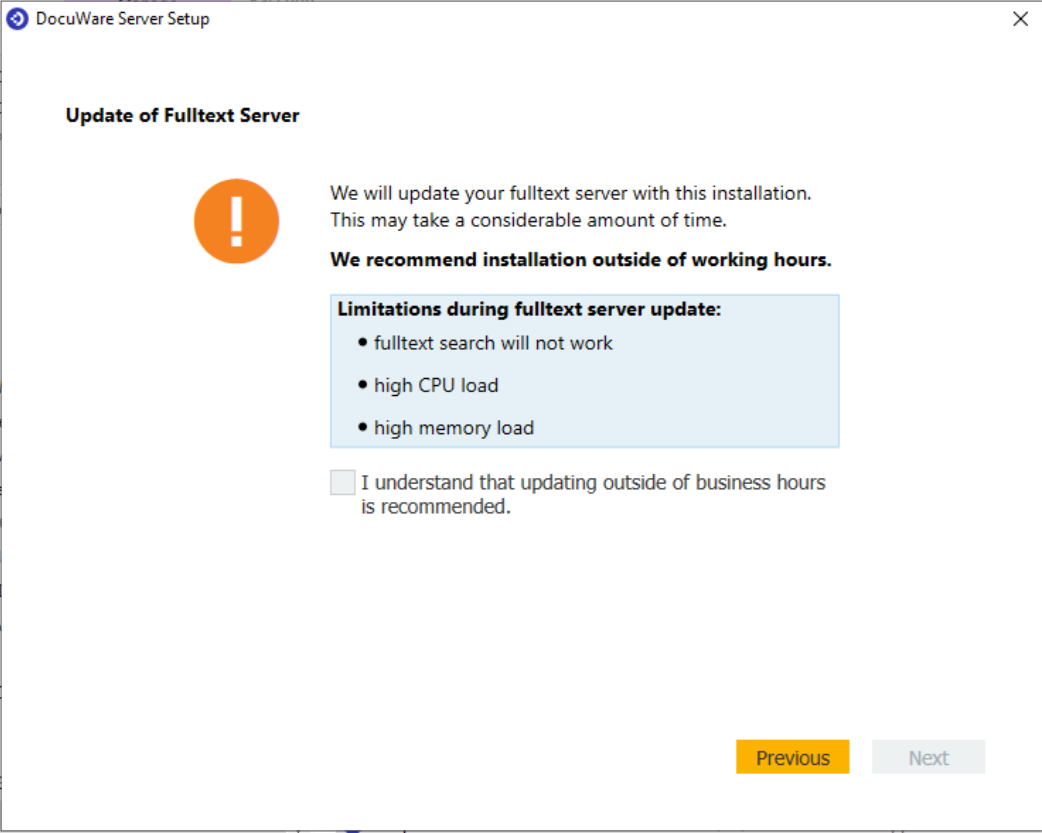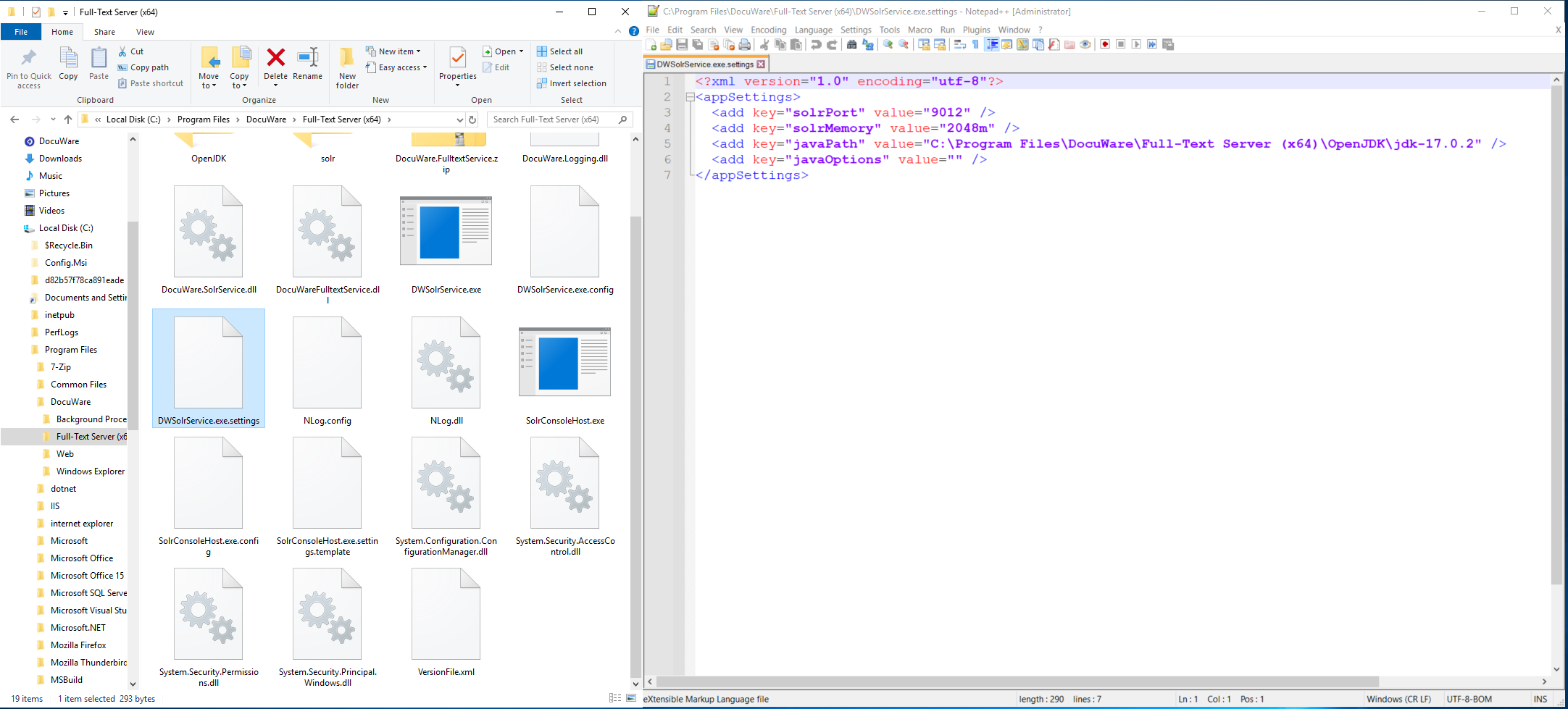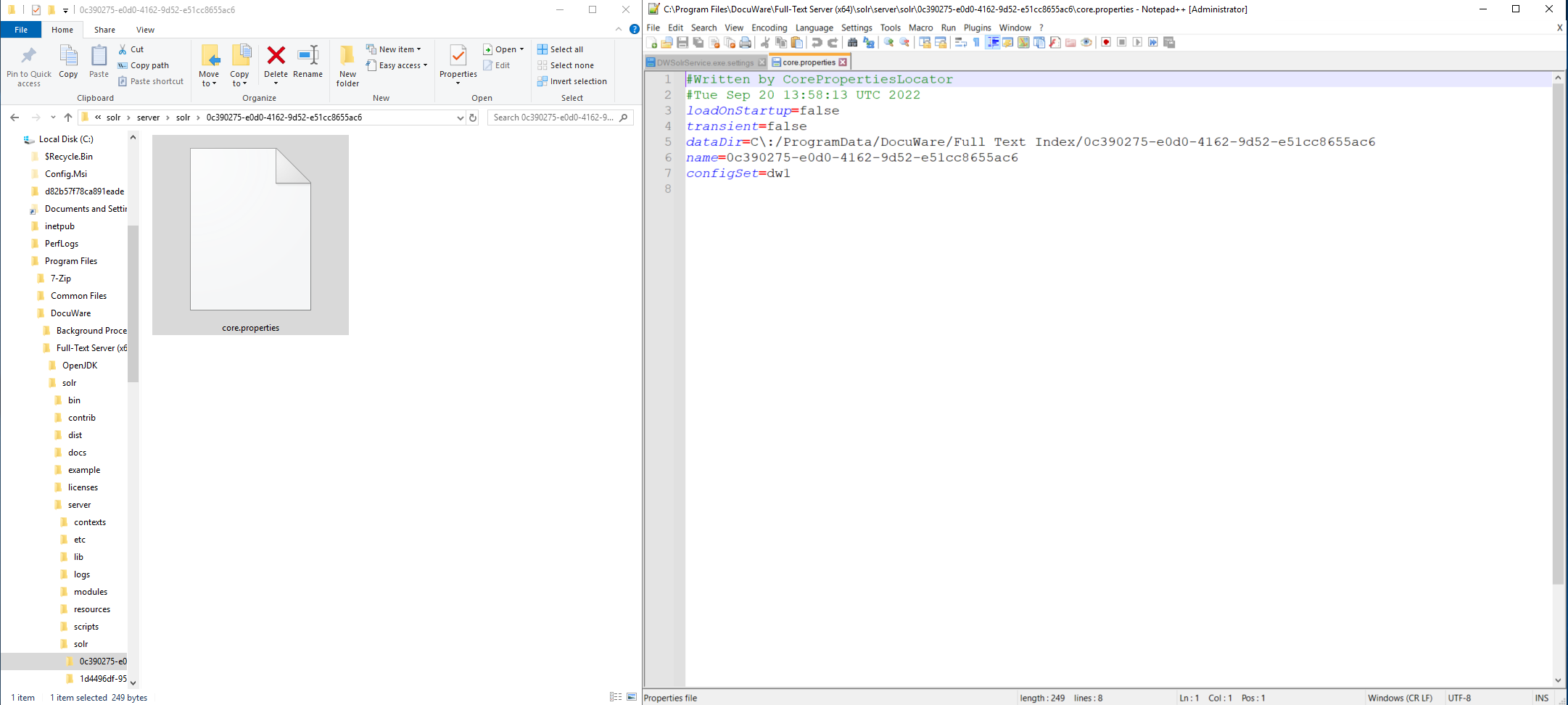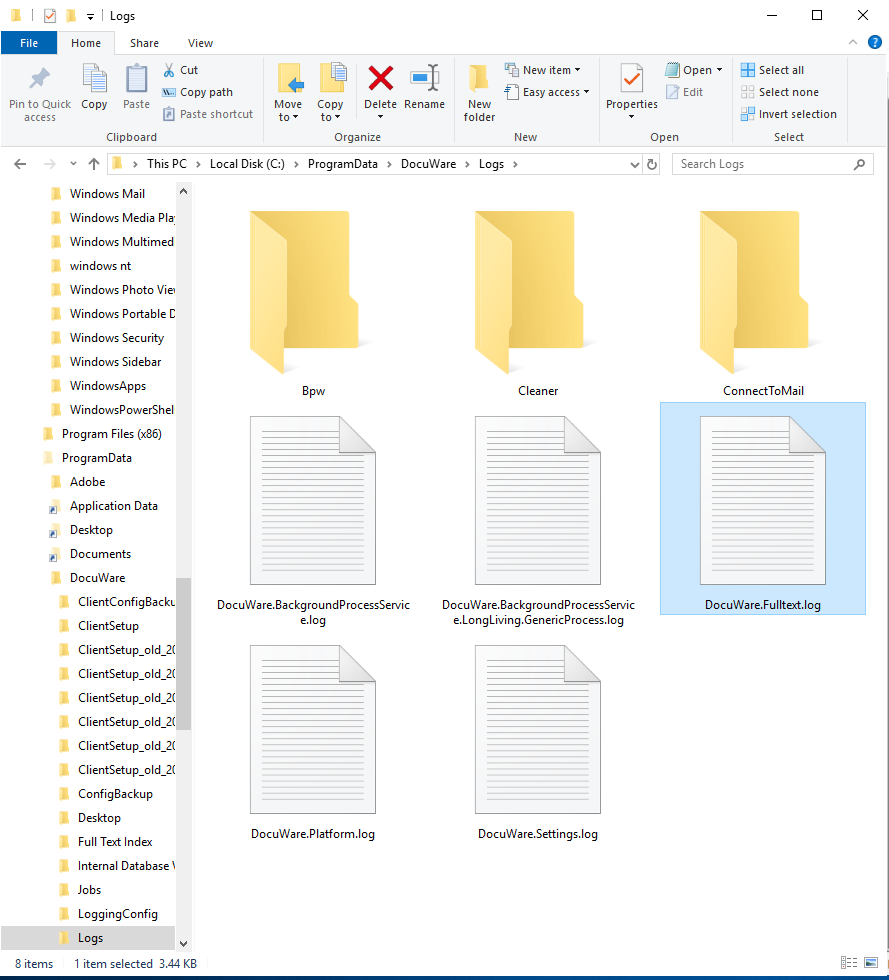DocuWare 7.7. Introduces a new fulltext solution, with some changes in functionality and structure.
Tomcat is no longer used for the Fulltext Server
SOLR 9 no longer needs Tomcat therefore the service name we currently use for our Fulltext server (DWTomcat) will be changed to DWSolr. From now on we have custom .Net windows service.
Fulltext server does not allow UNC paths
Scenario:
With DocuWare version 7.7, we started using SOLR version 8.11 for on-premise.
Solution:
Since SOLR version 8.6.0, there is an important change for UNC paths. For security reasons, SOLR has removed the ability to use UNC paths. For security reasons, support for mapped drives on the Java side has also been removed.
For this reason, a local path must be used for the full-text index folder.
Rebuild from Fulltext Index
With DocuWare version 7.7 we started to use SOLR version 8.11 for on-premise, therefore the fulltext index from older SOLR versions can no longer be used and must be rebuilt. This process is automatically started after the DocuWare update for all archives for which the fulltext index is enabled.
In addition, the DocuWare update will indicate that the fulltext index must be rebuilt.

Kindly note that the duration and system load depend on the following factors:
- Number and content of documents
- Resources of the system
- System load due to other processes
Fulltext server settings
In previous DocuWare versions before DocuWare 7.7, the settings for the fulltext service could be made with the dwtomcatconfig.cmd under C:\Program Files\DocuWare\Full-Text Server (x64).
In DocuWare 7.7, these settings are made in DWSolrService.exe.settings under C:\Programs\DocuWare\Full-Text Server (x64).

The following settings must be adjusted here:
- solrPort
- Here, you can adjust the port on which fulltext will listen. It is also necessary to adjust the port in Administration under Data connections → Fulltext server connection.
- JavaPath
- Here you can enter the path to the jvm.dll. No full path has to be entered here because the \bin\server\ part is always added automatically at the end. If the entry is empty, the environment variable JAVA_HOME is used, if a value is present, this is used instead of JAVA_HOME
- solrMemory
- Here, you can define the maximum value for memory allocated to the Fulltext Server. (possible values are numbers followed by M/m or G/g).
- javaOptions
- additional parameters used when starting SOLR cmd in the service.
For the settings to take effect, the fulltext server must be restarted.
The replacement for solr.xml
In DocuWare versions before DocuWare 7.7, the full-text configurations of all associated file cabinets, also called "cores", were stored in a C:\Program Files\DocuWare\Full-Text Server (x64)\solr\server\solr\solr.xml file.
In DocuWare 7.7, the cores are stored in a separate folder in the file C:\Program Files\DocuWare\Full-Text Server (x64)\solr\server\solr\<FILECABINET-GUID>\core.properties. Each folder is named after the corresponding archive GUID.

The fulltext index path can be adjusted in the core.properties file. If the location of the fulltext index is moved and/or the location is changed in DocuWare Administration, this must also be manually adjusted in the corresponding core.properties file.

Fulltext Server Logs
In DocuWare 7.7 the logs are located in the fulltext installation folder C:\Program Files\DocuWare\Full-Text Server (x64)\solr\server\logs and additionally in the standard DocuWare log path C:\ProgramData\DocuWare\Logs\DocuWare.Fulltext.log.
Only general error messages from fulltext are displayed in the DocuWare. Fulltext.log, e.g., start/stop problems.



